Last month, I spent some weeks on the island of Koh Chang, tucked away in the Gulf of Thailand near Cambodia. The journey there was a bumpy five-hour bus ride from Bangkok, plus a short ferry ride from the terminal in Trat.
As the heat hovered around the 40°C mark, I spent most of my days seeking AC and refuge indoors from the blazing sun, characteristic of the island's arid season.
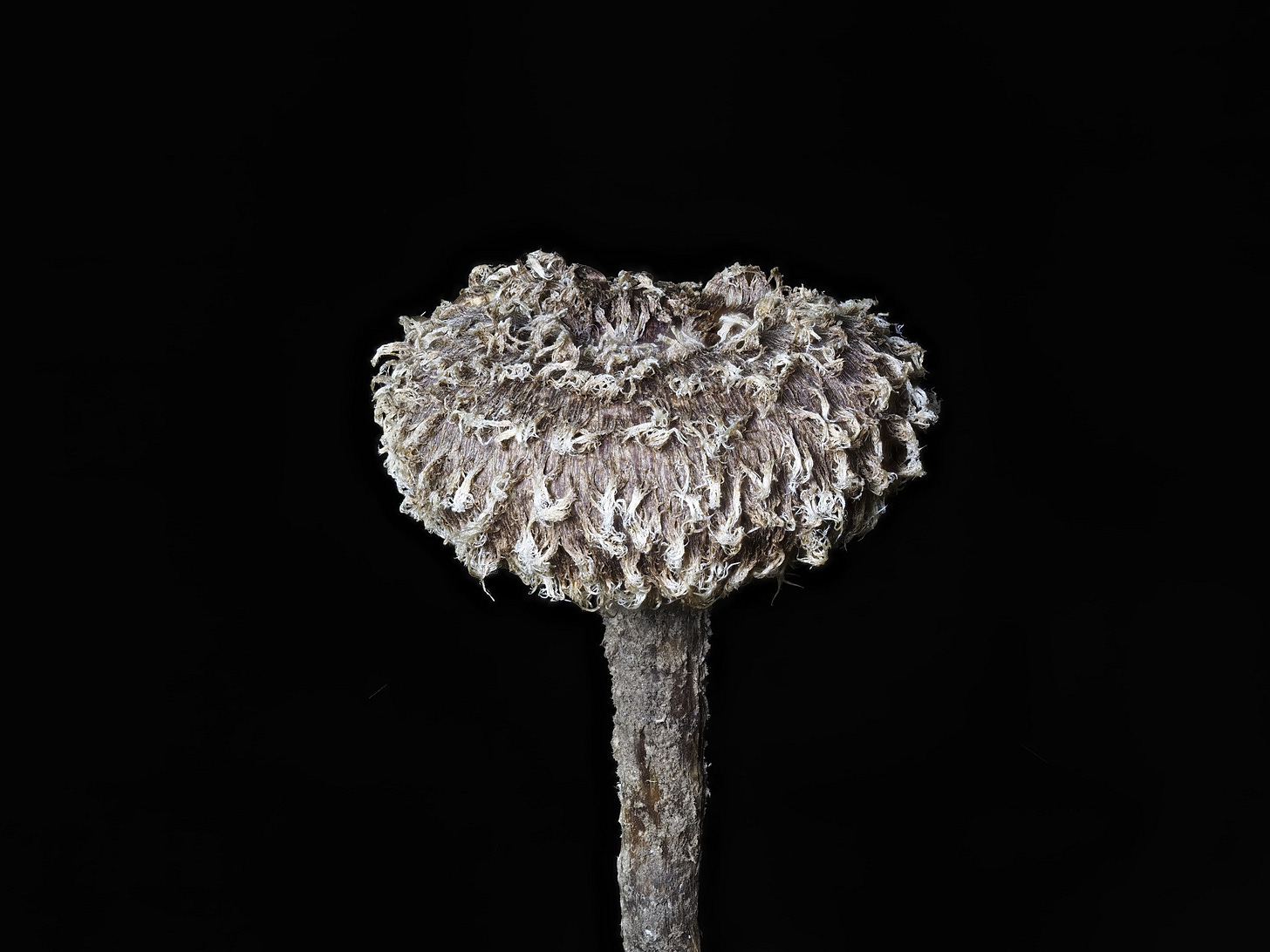
Before embarking on this trip, I didn't expect to find that many mushrooms, considering the lack of rain. However, Mother Nature surprised me one evening. The sky transformed into a brooding expanse of dark clouds, followed by a downpour.
Just the day before, I had taken a short hike to the Khlong Phlu waterfalls. I noticed a few desiccated Lentinus aka ‘Woodcap and Sawgill’ mushrooms on a branch, clinging onto life in the parched landscape, and other species reduced to petrified, hardened shapes.
To rehydrate the Lentinus, I submerged them in a pond to revive them. It's pretty amazing how resilient they are, almost like leather.
The genus name Lentinus is derived from the Latin lent, meaning "pliable", and inus, meaning "resembling". Some species are edible.
Post-deluge, curiosity brought me back to the waterfall trail. The land transformed and mushrooms erupted overnight.
Orange Hypholoma-like mushrooms sprouted from logs, and the likes of Lentinula cf. boryana, Xylaria flabelliformis, Favolus (Honeycomb Fungi), Mycena, and tiny Marasmiineae sprung up in surprising numbers.
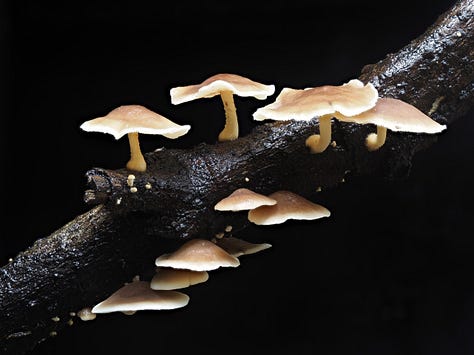

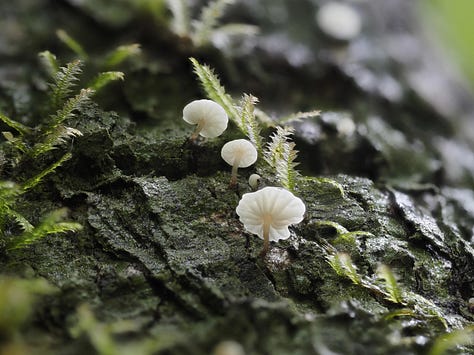
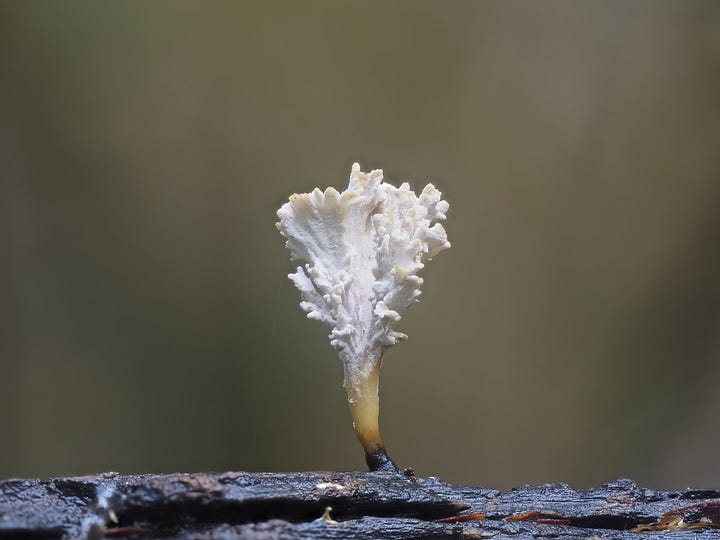
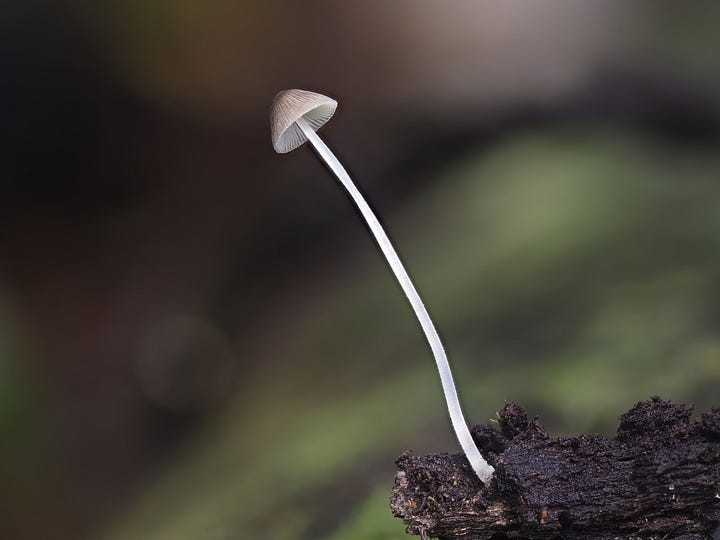
Amongst this eruption of life, a sight that particularly grabbed my attention was the presence of about a hundred Panaeolus cyanescens, or "Blue Meanies" as they're commonly called.
The name comes from blue bruising when handled, indicative of the potent psilocybin and psilocin compounds it holds within. It's not just a curiosity for adventurers; scientists are keen on the potential therapeutic applications of psilocybin in treating mood disorders, depression, anxiety, PTSD, and even addiction.
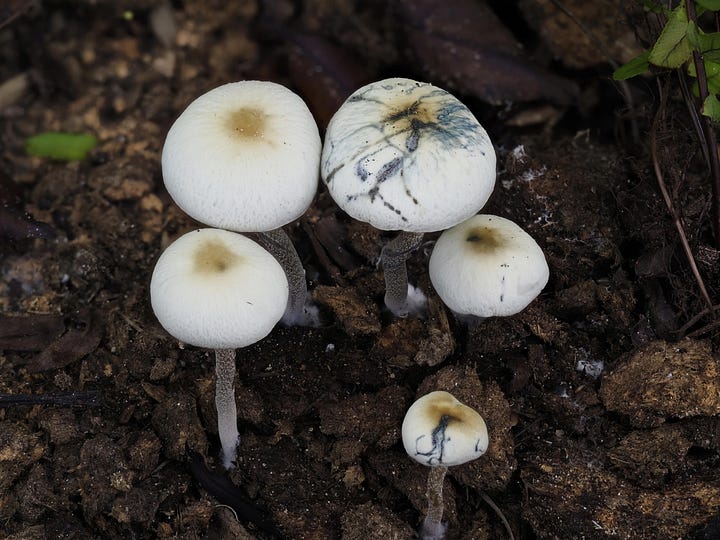
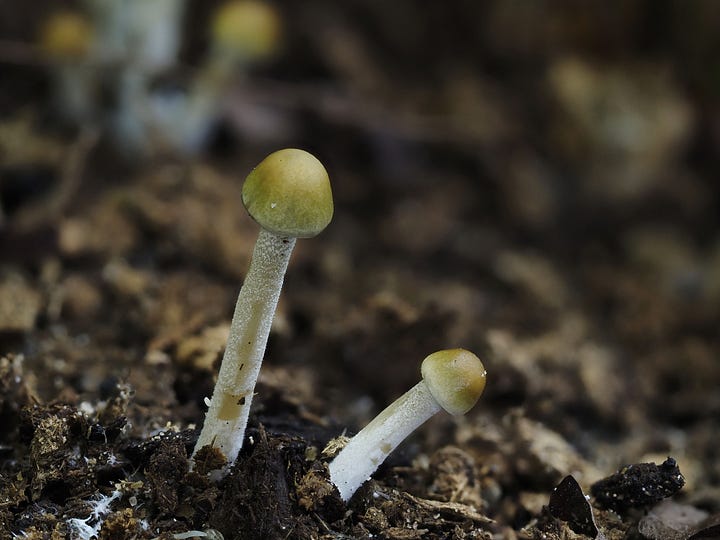
Seeing these potent psychoactive psilocybin mushrooms sprouting from a mix of soil and elephant dung was unexpected. The species typically grows in well-manured grounds and is often found in or near dung piles, particularly those of large herbivores such as cows and horses, and I've heard tales of their potency amplified when grown from water buffalo dung.
My journey on Koh Chang instilled a wish to revisit the island during the cooler months. Even in such harsh conditions, life found a way to assert itself in the form of these myriad fungi species.





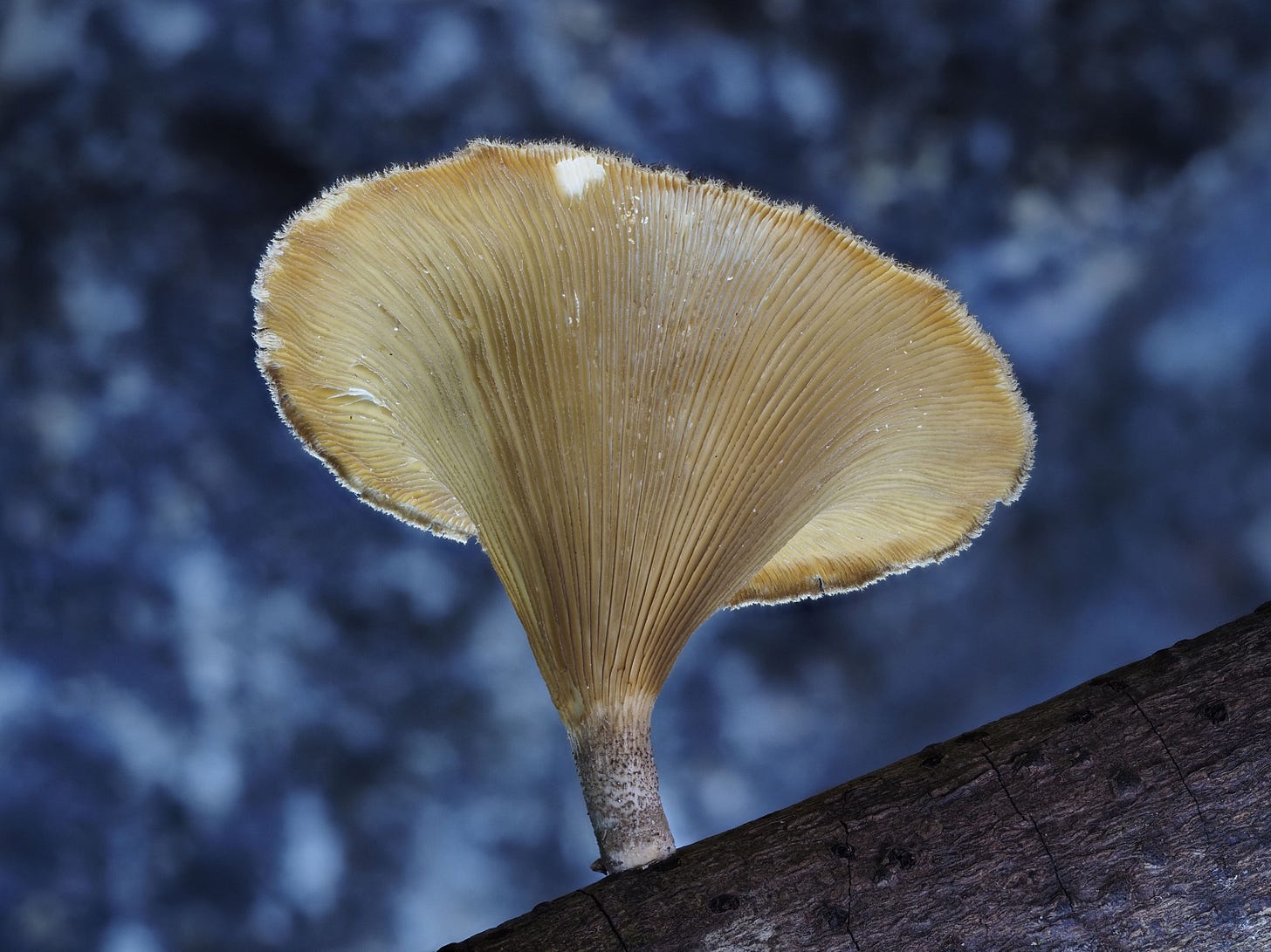

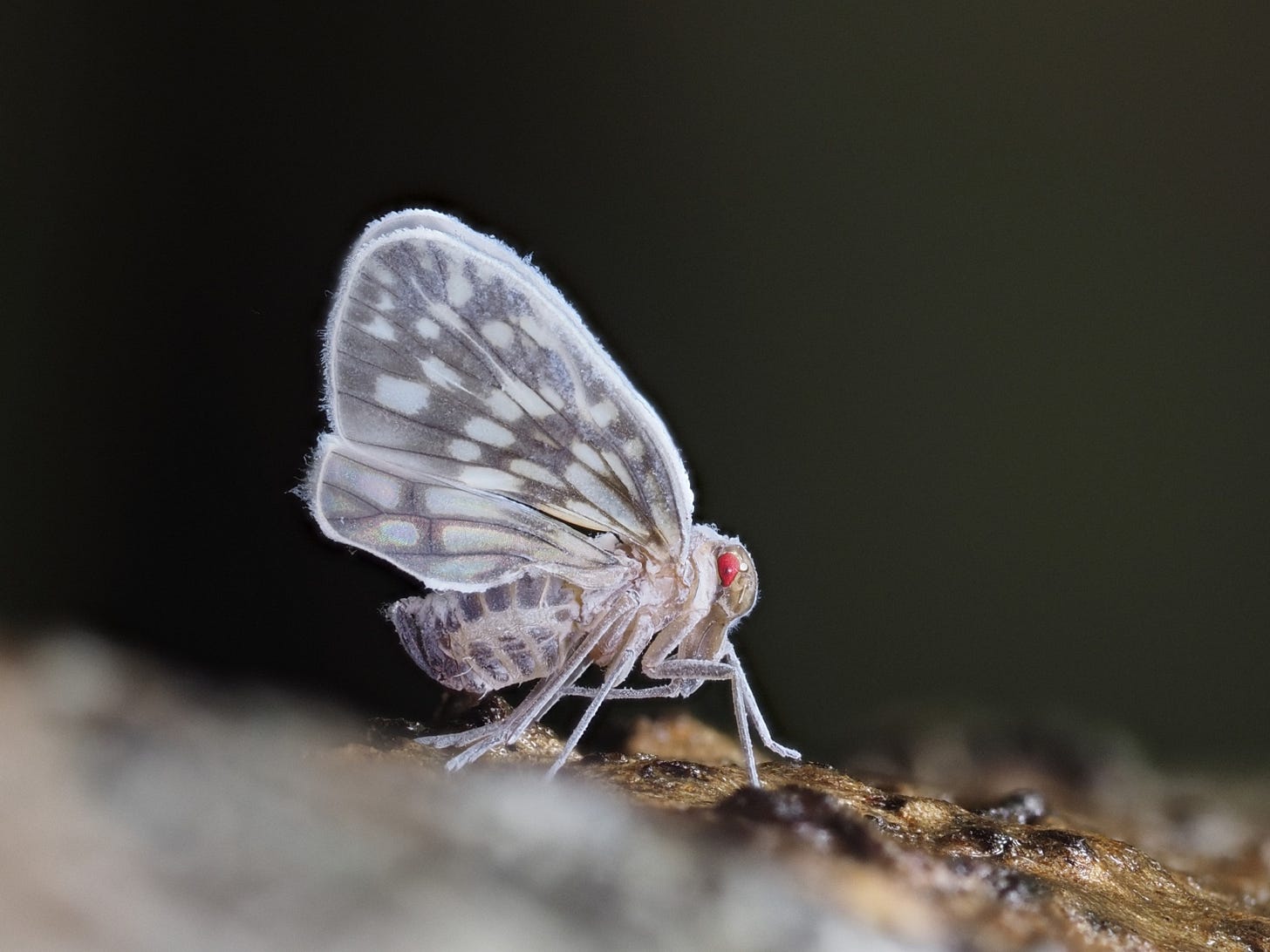

Share this post